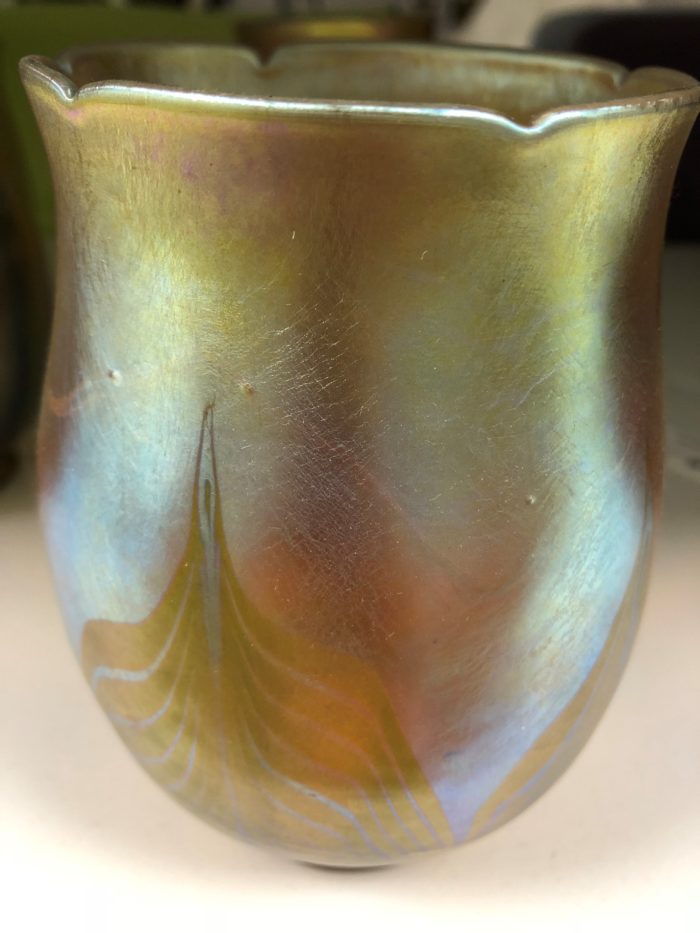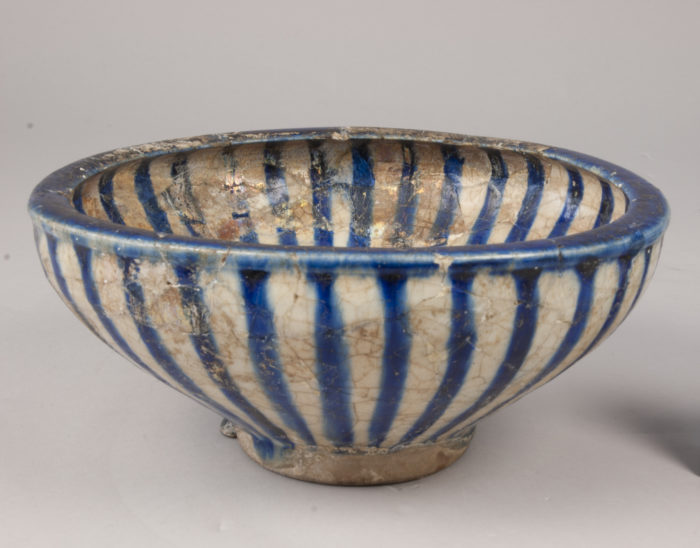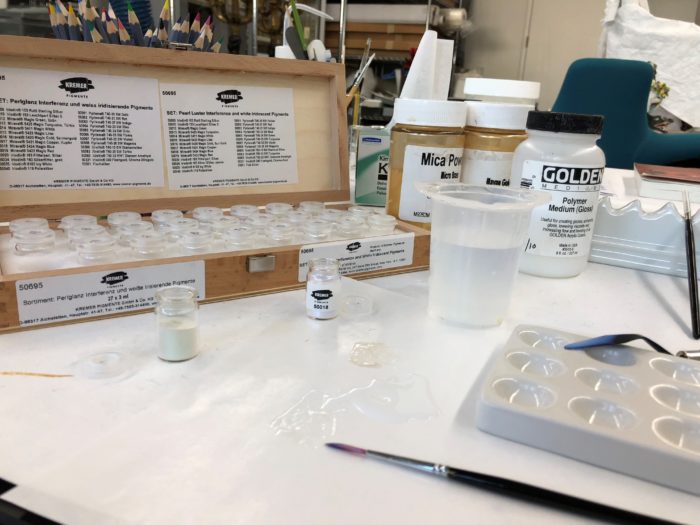Have you ever noticed shimmering rainbows floating along puddles in the road? This bright iridescence is created by oil floating on the water, and is caused by the way light interacts with itself as it travels through the oil film to the water below. We often refer to this phenomenon as interference colors (good explanation can be found here). Artists, artisans, and designers working throughout history have also been fascinated by this magical effect and have sought to recreate it in their craft. Iridescence (July 28, 2018–March 24, 2019) presents many examples of iridescent objects pulled from Cooper Hewitt’s permanent collection. The objects’ flashing, colorful surfaces surprise and delight as you walk around them and view them from multiple vantage points (Fig. 1).

Fig 1. Example, glass shade with iridescent surface.
Prior to being put on view, each museum object is reviewed by the Conservation department. In the rare instance where an object needs a lot of attention, we move the piece to our lab where we examine it more closely and consider how best to treat it. This work is sometimes as simple as reducing soiling on surfaces, and can be as challenging as reversing old restoration attempts and working to make sure the collection item can be displayed once more. As part of the Iridescence exhibition, we treated a thirteenth-century glazed bowl, likely associated with production from Kashan, Iran (Fig. 2). This piece was excavated from an archaeological site, and consists of multiple fragments (which we call “sherds”). Burial in soil for an extended period of time can cause deterioration of certain materials, and the sherds we have exhibit a range of conditions. Some sherds still appear bright and colorful while others have clearly deteriorated.

Fig 2. Bowl (Iran), 13th century; Glazed earthenware; H x diam.: 9.4 x 20.6 cm (3 11/16 x 8 1/8 in.); Gift of Ephron Gallery, 1958-72-5
Glaze applied to ceramic or similar material acts essentially like a layer of glass that reduces the porosity of the body below and makes a more robust surface. When certain components are removed from glass during archaeological burial (the time during which artifacts are buried underground), the thin layers of silica that remain cause those bright interference colors. Several sherds in our archaeological bowl exhibit these colors (which were never intended by the original maker). As the bowl was missing several pieces, we were obliged to make “fills,” or areas where original losses required compensation. The final step in fill making is to paint the new material so it is not readily apparent, which we call “inpainting.”
We had to decide whether or not to mimic the iridescent glaze deterioration—a difficult feat given the range of those interference colors. Conservators use special pigments to create iridescence; these pigments are often manufactured from mica, a mineral with natural iridescence due to its layered structure (Fig. 3). Still, it can be extremely difficult to match weathered archaeological glazes with modern paints. Ultimately, just the blue glazed lines were painted, allowing the fills to integrate with the archaeological bowl but still remain visible to those who wish to study the ceramic in the future.

Fig. 3. Inpainting an iridescent surface: Pictured are the materials and tools that a conservator might use to inpaint an area of loss compensation—a “fill”—on a iridescent object, including brush and pigments. The box contains mica pigments that create the illusion of iridescence.
Sarah Barack is the Head of Conservation and Senior Objects Conservator at Cooper Hewitt.
